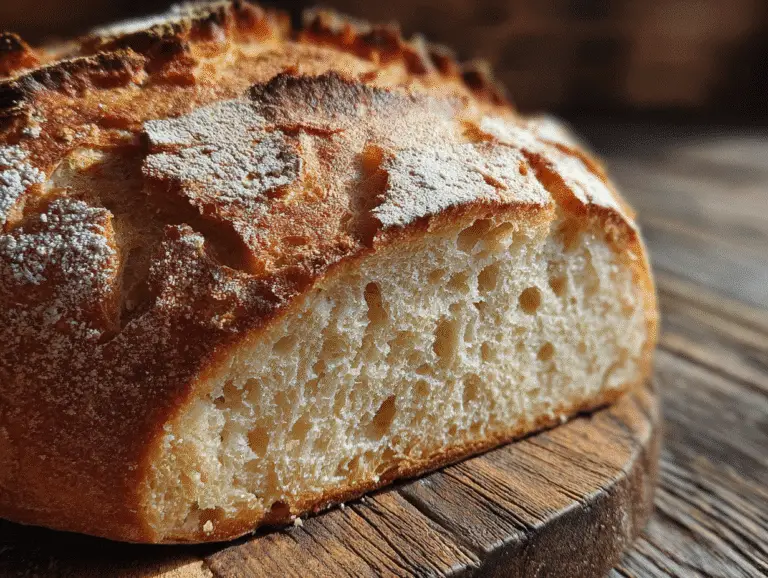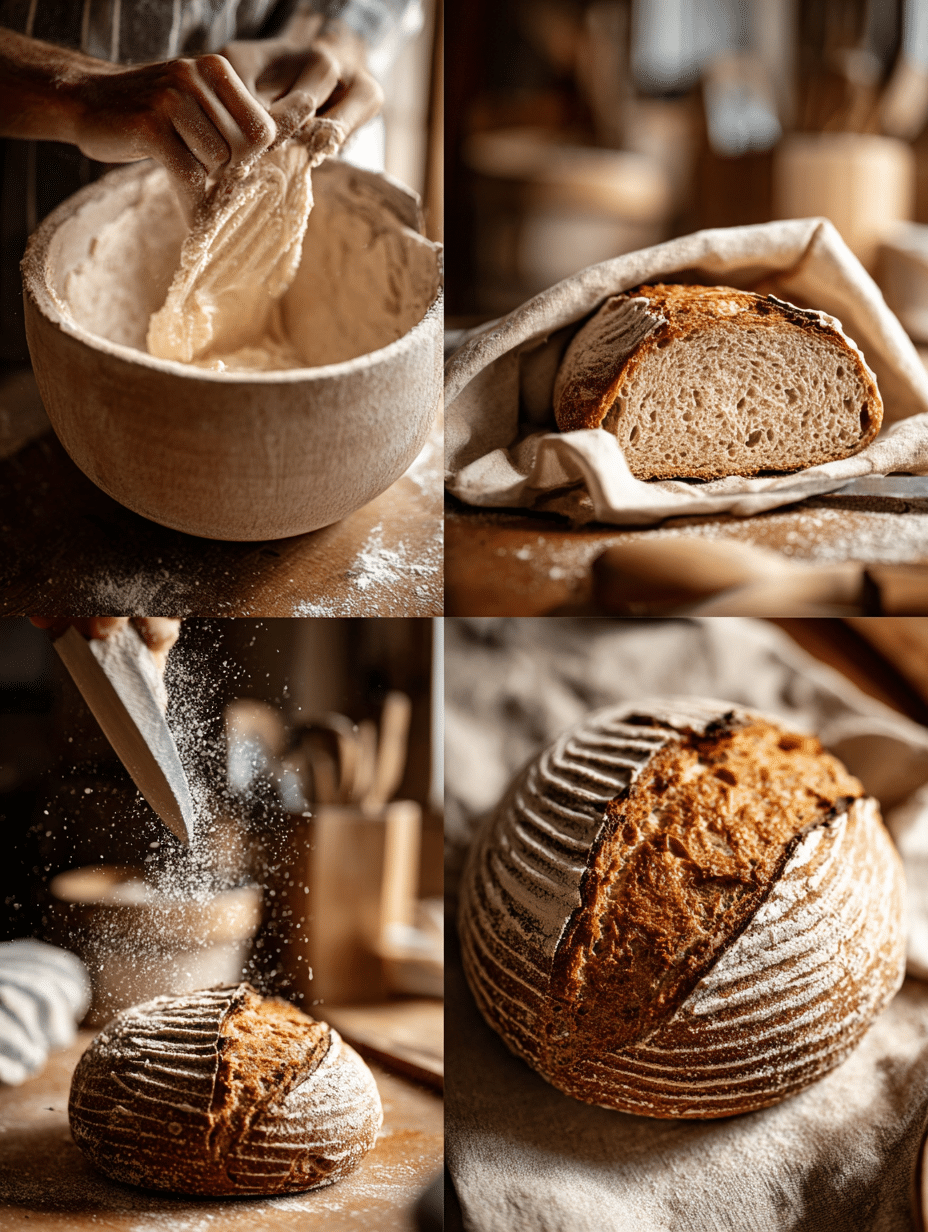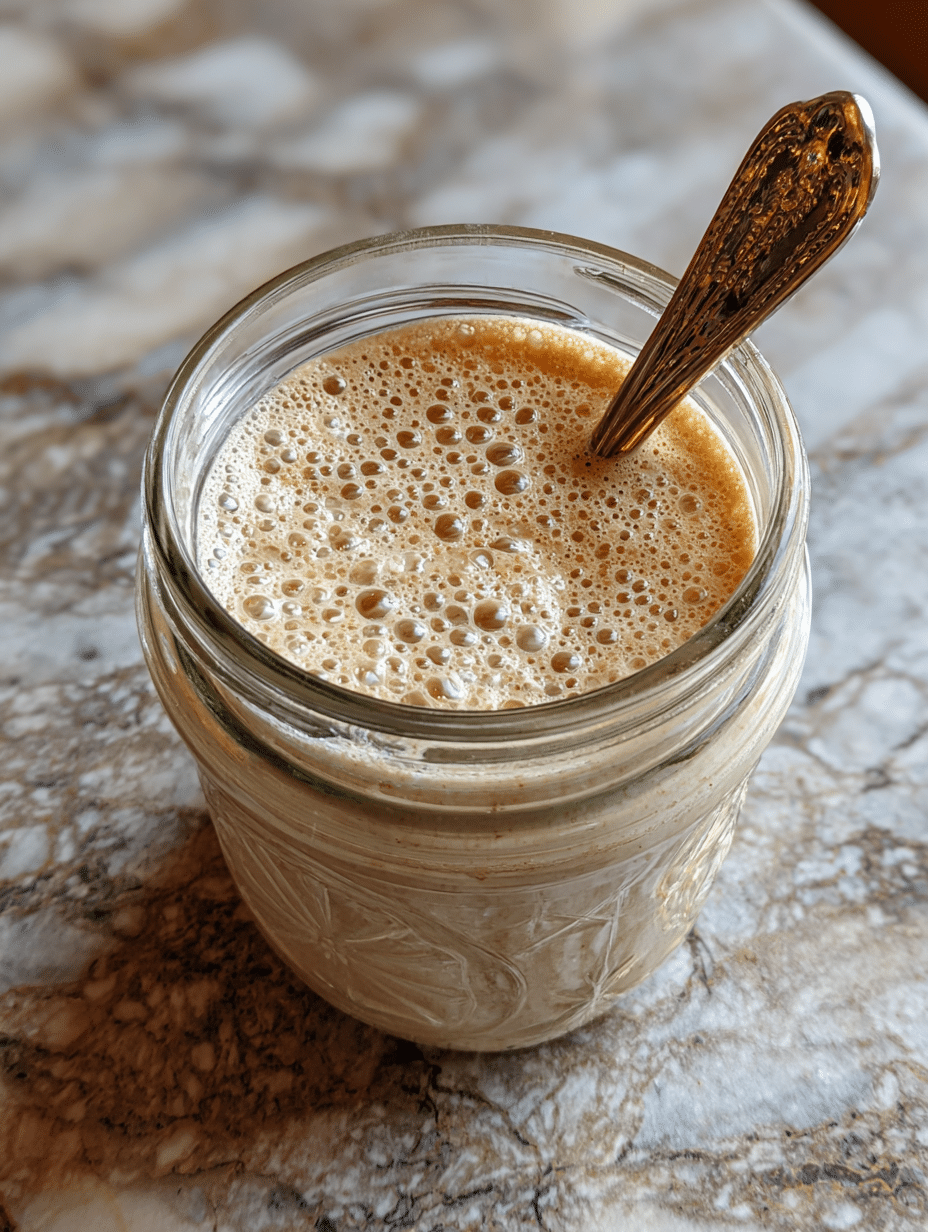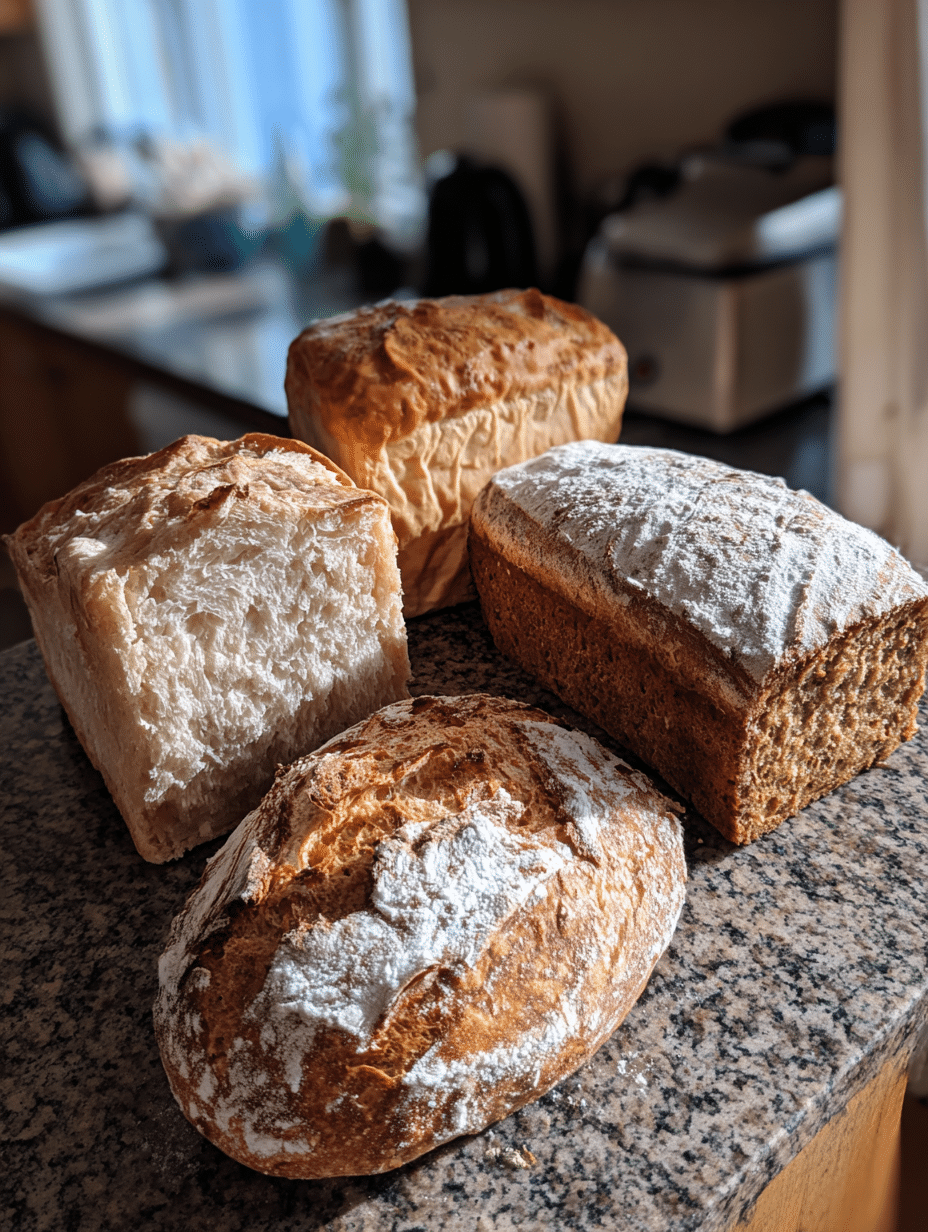Gluten free sourdough bread is more than just a healthier trend—it’s a revolution for anyone who thought giving up gluten meant sacrificing real flavor. This tangy, crusty, slow-fermented bread is no longer exclusive to traditional wheat-based kitchens. With the right flours, a little patience, and some sourdough science, it’s entirely possible to enjoy artisan-style bread—without the gluten.
If you’ve ever struggled with dry, dense gluten-free loaves, you’re not alone. Most store-bought options fall short on taste and texture. But sourdough changes the game. Thanks to wild yeast and long fermentation, gluten free sourdough bread offers improved digestibility, a naturally leavened rise, and that beloved sour kick that’s hard to replicate in other gluten-free breads.
In this guide, we’ll break down everything you need to know—from starting your own gluten-free sourdough starter to the best flours and brands. We’ll also tackle questions like: can you use King Arthur’s gluten-free flour for sourdough? And is it really possible to buy quality gluten-free sourdough in stores?
For more baking options, check out our gluten free bread guide for everyday loaf ideas that fit your diet without compromise.
Table of Contents

Gluten Free Sourdough Bread – The Best Complete Guide for Baking & Buying
A tangy, crusty gluten‑free sourdough loaf made with a blend of rice, sorghum, and buckwheat flours, long-fermented with a wild gluten‑free starter and structured using psyllium husk.
- Total Time: PT6H
- Yield: 1 loaf (10–12 slices) 1x
Ingredients
- 1 cup gluten‑free sourdough starter (fed and active)
- 1½ cups brown rice flour
- 1 cup sorghum flour
- ½ cup buckwheat flour
- ¼ cup tapioca starch
- 2 tbsp psyllium husk powder
- 1½ tsp salt
- 1–1¼ cups warm water
- 2 tbsp olive oil (optional)
Instructions
- Mix starter, flours, starch, psyllium, and salt.
- Add warm water and olive oil; stir until it forms a thick batter-like dough.
- Cover and ferment at room temp 4–6 hours until puffed and bubbly.
- Preheat oven to 450 °F (230 °C) with Dutch oven inside.
- Transfer dough to parchment in the hot Dutch oven; score the top.
- Bake covered 20 min, then uncovered 15–20 min until crust is deep brown.
- Cool on a rack for 2 hours before slicing.
Notes
Use a strong gluten‑free starter. Psyllium husk is key for structure and crumb. Long fermentation enhances flavor and digestibility. Store well‑cooled loaf in a paper bag or freeze slices for later.
- Prep Time: PT20M
- Cook Time: PT40M
- Category: Bread
- Method: Baking
- Cuisine: Gluten‑Free
Nutrition
- Serving Size: 1 slice
- Calories: 120
- Sugar: 0g
- Sodium: 210mg
- Fat: 3g
- Saturated Fat: 0.5g
- Unsaturated Fat: 2g
- Trans Fat: 0g
- Carbohydrates: 22g
- Fiber: 3g
- Protein: 2g
- Cholesterol: 0mg
What Is Gluten Free Sourdough Bread?
Understanding the Basics of Sourdough
Sourdough bread is one of the oldest styles of bread in the world—naturally fermented and made with wild yeast and lactic acid bacteria instead of commercial yeast. This fermentation process gives sourdough its distinctive tangy flavor and helps improve texture, shelf life, and digestibility.
Traditionally, sourdough is made with wheat flour, which means it contains gluten. But for those with celiac disease or gluten sensitivity, that’s a no-go.
So, what makes gluten free sourdough bread different?
How Gluten Free Sourdough Bread Works
Gluten free sourdough bread skips the wheat and uses gluten-free flours like rice, sorghum, buckwheat, or millet. The wild yeast still does the leavening, and the bacteria still develop that deep, sour flavor. But without gluten’s elasticity, the texture must be carefully built with binders like psyllium husk or flaxseed meal.
Despite the challenges, a well-made gluten free sourdough loaf can have a beautiful open crumb, a chewy crust, and that signature sour tang you’d expect from the traditional version.
Key differences include:
- No gluten network for stretch or rise—so structure must be created with the right flour mix
- Longer fermentation to build strength in the dough
- Often slightly denser than wheat sourdough, but more gut-friendly for gluten-sensitive eaters
Why Go Through the Effort?
Because sourdough fermentation doesn’t just create flavor—it changes the bread nutritionally, too. Even in gluten free sourdough bread, long fermentation helps break down complex carbs and increases the bioavailability of nutrients.
That means you get a bread that’s not only easier to digest but also more nutritious than most gluten-free sandwich loaves loaded with starch and gums.
Don’t miss our gluten free banana nut bread muffins for another nourishing, gut-friendly option with a natural rise and rich flavor.
Is Gluten-Free Sourdough Bread Really Possible?
Short Answer: Yes. Absolutely.
The idea that sourdough requires wheat flour is outdated. Thanks to modern experimentation and a better understanding of wild fermentation, we now know that gluten free sourdough bread is not only possible—it can be just as delicious, crusty, and satisfying as traditional loaves.
It’s all about adjusting your expectations and working with the right tools: alternative flours, a strong wild yeast starter, and patience.
How Does It Work Without Gluten?
Gluten is what gives dough its stretch and ability to trap gases from fermentation. In traditional sourdough, this forms an airy structure. But in gluten free sourdough bread, we have to build structure differently.
Here’s what makes it work:
- Psyllium husk or flaxseed acts as the gluten stand-in—giving dough elasticity
- Fermentation with wild yeast still provides leavening
- Acids from fermentation break down starches and enhance flavor
- Using a blend of flours—like brown rice, sorghum, and buckwheat—creates balance in taste and crumb
The result? A real, crusty loaf that rises naturally, just like traditional sourdough.
Common Myths Debunked
MYTH 1: All sourdough is naturally gluten-free
→ Not true. While fermentation can reduce gluten levels, traditional sourdough made from wheat still contains gluten—unsafe for celiacs.
MYTH 2: You need commercial yeast in gluten free baking
→ Not with sourdough. Your wild starter does the work if it’s healthy and active.
MYTH 3: GF sourdough won’t rise
→ It will—if you give it time and use the right binder-to-flour ratio. Proper hydration and fermentation make all the difference.
Is It Worth Making?
If you’re already avoiding gluten, making your own gluten free sourdough bread can be life-changing. You’ll get better flavor, cleaner ingredients, and real artisan-style bread at a fraction of the cost of store-bought options.
Check out our gluten free pita bread guide for another gluten-free staple you can easily make at home.
Benefits of Gluten Free Sourdough Bread
Eating gluten-free doesn’t mean you have to settle for bland, crumbly loaves. In fact, gluten free sourdough bread offers some distinct advantages over both traditional sourdough and most commercial gluten-free breads. From gut health to blood sugar control, this fermented favorite does more than satisfy your carb cravings.
1. Easier to Digest
The fermentation process that defines sourdough breaks down starches and antinutrients—making the bread easier to digest than typical gluten-free loaves. Even without gluten, sourdough cultures work to “pre-digest” the flours, which can ease bloating and make nutrients more bioavailable.
This benefit is especially important for people with sensitive guts or IBS. If you’ve had trouble with other gluten-free breads, gluten free sourdough bread may feel a lot gentler.
2. Better Blood Sugar Control
Unlike many gluten-free breads that are packed with starchy fillers and sugar, sourdough has a lower glycemic index. Thanks to fermentation, it releases glucose more slowly into your bloodstream, preventing those post-meal spikes and crashes.
Pair a slice with protein or healthy fat, and it becomes an ideal carb for anyone managing blood sugar—whether you’re diabetic, pre-diabetic, or simply mindful of energy levels.
3. Naturally Preserved and Cleaner Ingredients
One major bonus of sourdough is its natural preservation. The acidity from the fermentation acts as a mold inhibitor—meaning your bread stays fresh longer without chemical preservatives.
Plus, homemade or artisan gluten free sourdough bread usually skips additives like xanthan gum, cornstarch, and artificial flavors. You get clean, simple ingredients that you can actually pronounce.
4. Supports a Healthy Gut Microbiome
Sourdough fermentation creates prebiotics—which feed your good gut bacteria. While it’s not a probiotic itself (because the bacteria don’t survive baking), the prebiotic fiber in the bread helps your microbiome thrive over time.
Don’t miss our pink salt morning tonic—another gut-friendly recipe that pairs perfectly with your gluten-free loaf.
5. More Flavor, Less Effort
Let’s not forget the obvious: flavor. Gluten free sourdough bread has a richness and depth that most gluten-free alternatives lack. Whether you toast it, dip it in olive oil, or build a sandwich, it adds serious character to any meal—with just a little time and care.
Best Flours for Gluten Free Sourdough
When it comes to crafting a great loaf of gluten free sourdough bread, your flour choices matter—a lot. Unlike traditional sourdough, which relies on the strength of wheat gluten, gluten-free sourdough needs a blend of flours to build structure, develop flavor, and achieve a decent rise.
So, what flours actually work?
Let’s break down the best ones and how to combine them for baking success.
What Flours Work Best for Gluten-Free Sourdough?
Here are the top gluten-free flours used by experienced sourdough bakers:
| Flour Type | Texture | Flavor Profile | Key Benefits |
|---|---|---|---|
| Brown Rice | Light | Mild, slightly nutty | Great base flour, neutral taste |
| Sorghum | Fine | Earthy, sweet-ish | Adds softness and structure |
| Millet | Fine | Mild, slightly sweet | Helps balance denser flours |
| Buckwheat | Coarse | Strong, earthy | Boosts fermentation and rise |
| Teff | Powdery | Deep, nutty, rich | Adds nutrients and flavor complexity |
These flours work best when blended, not used solo. For example:
A 60/40 mix of brown rice and sorghum is a great starting point. Adding a small amount of teff or buckwheat can deepen the flavor.
Essential Starches and Binders
Because we’re not working with gluten, you need something to help hold the dough together and trap gas from fermentation.
Top choices include:
- Tapioca starch – Adds chew and elasticity
- Arrowroot powder – Lightens crumb texture
- Psyllium husk – The binder of choice; creates dough elasticity and mimics gluten
- Flaxseed meal – Adds fiber and structure, especially in combination with psyllium
Use these wisely—too much starch and the bread becomes gummy. Not enough binder and it’ll crumble.
How to Mix Your Gluten Free Flour Blend
For a reliable homemade blend, try this:
- ½ cup brown rice flour
- ½ cup sorghum flour
- ¼ cup tapioca starch
- 2 tablespoons teff flour
- 1 tablespoon psyllium husk
- 1 teaspoon salt
This combo offers a balanced texture and flavor for most gluten free sourdough recipes.
Discover great ideas like gluten free banana nut bread muffins if you’re exploring how flours affect texture and structure in other gluten-free bakes.
Step-by-Step Gluten Free Sourdough Starter Guide

Before you can make amazing gluten free sourdough bread, you need a healthy starter. This is the heart of every sourdough recipe—it’s where fermentation begins. The great news? You don’t need any fancy ingredients, and yes, you can build a strong, bubbly starter using only gluten-free flours.
Here’s how to do it the right way.
What You’ll Need to Get Started
- A clean glass jar (16 oz or bigger)
- Brown rice flour (or sorghum for added depth)
- Filtered or dechlorinated water (chlorine can kill wild yeast)
- Wooden spoon or spatula
- A kitchen scale (recommended for accuracy)
- Patience—it takes about 5 to 7 days
Day-by-Day Starter Timeline
Day 1:
- Mix 50g brown rice flour + 50g filtered water in your jar.
- Stir well. Cover loosely with a lid or cloth. Leave at room temp (68–75°F).
Day 2–3:
- Discard half of your starter. Add 50g flour + 50g water.
- Stir and let it sit. You might see small bubbles.
Day 4–5:
- Bubbles should increase and smell slightly sour.
- Continue daily feedings (discard half, feed fresh flour + water).
Day 6–7:
- Your starter should double in size within 4–6 hours of feeding.
- If it does, it’s active and ready to bake gluten free sourdough bread!
Tips for a Healthy Gluten Free Starter
- Use whole grain flours like sorghum or teff in the early days to boost wild yeast
- Always use room-temperature water to avoid shocking the culture
- Don’t switch flours too often—it can confuse your starter
- If mold appears, discard and start over
- If you’re going to pause baking, store it in the fridge and feed weekly
Check out our cottage cheese bagels for another creative way to use gluten-free fermentation concepts in baking.
Once your starter is bubbly and active, you’re ready to move on to mixing dough and making that first crusty loaf of gluten free sourdough bread.
Gluten Free Sourdough Bread Recipe

You’ve got your bubbly starter, your flour blend, and your confidence—now it’s time to bake. This recipe makes one loaf of gluten free sourdough bread that’s crusty outside, tender inside, and rich with flavor. It uses no commercial yeast, just wild fermentation and patience.
Ingredients
| Ingredient | Amount |
|---|---|
| Active gluten-free starter | ½ cup (120g) |
| Brown rice flour | 1 cup (130g) |
| Sorghum flour | ¾ cup (100g) |
| Tapioca starch | ½ cup (65g) |
| Psyllium husk | 1½ tbsp (12g) |
| Salt | 1 tsp |
| Filtered water | 1¼ cup (300ml) |
| Olive oil (optional) | 1 tbsp |
Instructions
Step 1: Make a Psyllium Gel
- Mix psyllium husk with 1 cup of warm water. Let it thicken for 5–10 minutes. This will help bind the dough and mimic gluten.
Step 2: Combine Dry Ingredients
- In a large bowl, mix the brown rice flour, sorghum, tapioca starch, and salt. Stir well.
Step 3: Add Wet Ingredients
- Add the starter, psyllium gel, remaining water, and olive oil. Mix until a thick, sticky dough forms. Let it rest for 20 minutes to hydrate fully.
Step 4: Shape the Dough
- Lightly flour a surface with rice flour. Shape the dough into a round or oval. Transfer to a parchment-lined bowl or proofing basket.
Step 5: Bulk Ferment
- Cover and ferment at room temperature for 5–8 hours, until puffy but not doubled. If your kitchen is cool, go for the longer end.
Step 6: Preheat Oven
- Place a Dutch oven inside and preheat to 450°F (232°C) for 45 minutes.
Step 7: Bake
- Transfer dough (on parchment) into the hot Dutch oven. Score the top with a sharp knife.
- Bake covered for 30 minutes, then uncovered for 20 more until deep golden.
Step 8: Cool Before Slicing
- Let your gluten free sourdough bread cool on a wire rack for at least 2 hours before slicing. This helps the crumb set.
Tips for the Perfect Loaf
- Want a lighter texture? Add a bit more tapioca or millet flour.
- Too gummy? Reduce hydration by 2–3 tablespoons next time.
- Want a stronger sour flavor? Extend fermentation by a few hours.
Looking for inspiration? Try our cottage cheese chips recipe as a crunchy side for your gluten free sourdough sandwiches.
Common Mistakes When Making Gluten Free Sourdough Bread
So you followed the recipe, made your starter, and baked your first loaf… but something didn’t turn out right. Don’t worry—gluten free sourdough bread takes practice, and even experienced bakers hit bumps in the road. Here’s a breakdown of the most common mistakes and how to fix them.
Mistake #1: Gummy or Dense Center
Why it happens:
- Overhydration
- Underbaking
- Insufficient psyllium husk or other binders
Fix it:
- Decrease water slightly in your next bake
- Bake longer (especially uncovered) to dry the interior
- Check if your psyllium gel fully hydrated before mixing into dough
Mistake #2: Flat or Collapsing Loaf
Why it happens:
- Overproofing the dough
- Weak starter
- No structure in flour blend
Fix it:
- Shorten your rise time slightly
- Feed your starter more frequently before baking day
- Add a small amount of buckwheat or teff to strengthen your mix
Mistake #3: No Rise at All
Why it happens:
- Starter isn’t active enough
- Environment too cold
- Dough didn’t ferment long enough
Fix it:
- Warm up your kitchen (ideal temp is 72–75°F)
- Give it more fermentation time
- Do a “float test” on your starter—drop a spoonful into water. If it floats, it’s ready.
Mistake #4: Crumbly, Dry Texture
Why it happens:
- Not enough psyllium or hydration
- Dough wasn’t mixed well enough
- Used a flour blend with too much starch
Fix it:
- Increase psyllium or add a tablespoon of olive oil to improve moisture
- Stick to a 60/40 mix of whole grain + starch
- Mix the dough longer to fully bind ingredients
Mistake #5: Sour Flavor Too Mild or Too Strong
Why it happens:
- Short or overly long fermentation
- Imbalanced flour blend
- Starter isn’t mature enough
Fix it:
- Extend the bulk fermentation by 2–4 hours for stronger tang
- Let your starter develop for a full 7 days before baking
- Use sorghum or buckwheat flours to enhance flavor depth
Don’t miss our does pink salt help in weight loss? if you’re also trying to optimize digestion and nutrient absorption in your gluten-free diet.
Pro Tip: Always Take Notes
Each bake teaches you something. Record your flour mix, hydration level, and proof times so you can adjust and improve with each loaf of gluten free sourdough bread.
Best Store-Bought Gluten Free Sourdough Brands

Not everyone has time to feed a starter or ferment a dough for hours—and that’s okay. The good news? Yes, you can buy gluten free sourdough bread. And some of it is surprisingly good.
Let’s look at the best options you can trust.
Can You Buy Sourdough Gluten-Free?
Yes. But read those labels carefully.
Look for sourdough that is:
- Certified gluten-free (especially for those with celiac)
- Naturally leavened (no commercial yeast)
- Made with whole-food ingredients
- Free from added sugars, gums, and preservatives
Avoid loaves with vague “sourdough flavoring” or blends that use white rice flour and starches exclusively—they often lack the tang, nutrition, and structure real gluten free sourdough bread delivers.
Top Store-Bought Gluten Free Sourdough Brands (USA)
Here are a few brands consistently praised by GF consumers:
🥖 Bread Srsly
- Certified GF, fermented for 12+ hours
- Made with millet, sorghum, and arrowroot
- Naturally tangy and crusty
- Ships nationwide
🍞 Simple Kneads
- Uses organic whole grains and root vegetables
- Bakes real artisan-style gluten free sourdough bread
- No eggs, gums, or artificial preservatives
- Texture is dense but moist
🫓 Little Northern Bakehouse
- More of a hybrid: uses yeast + sourdough culture
- Lighter sandwich-style loaf
- Widely available in health food stores
- Ideal for toast or quick lunches
Buying Tips
- Freeze extra loaves immediately—no preservatives means shorter shelf life
- Toast slices before eating to improve texture
- Pair with healthy fats like avocado or hummus to boost satisfaction
Check out our gluten free pita bread if you’re looking for another versatile store-bought (or homemade) gluten-free bread option.
Baking with King Arthur Gluten Free Flour
If you’re trying to simplify your ingredient list or avoid buying five different flours, you’ve probably considered using a pre-made blend. One of the most popular options? King Arthur’s Gluten-Free All-Purpose Flour. So the big question is: can you use it to make gluten free sourdough bread?
The short answer: yes—but with a few adjustments.
What’s in King Arthur’s GF Flour Blend?
Their standard gluten-free flour includes:
- Rice flour
- Potato starch
- Tapioca starch
- Brown rice flour
- Xanthan gum
It’s designed to mimic wheat flour in traditional recipes—but not specifically for sourdough fermentation. That means while it can work, you’ll need to fine-tune things to get great results in gluten free sourdough bread.
How to Make It Work for Sourdough
Here’s what we recommend when using King Arthur’s blend:
✅ Add Psyllium Husk
The blend lacks enough structure for sourdough. Add 1½ tablespoons of psyllium husk to every 2 cups of flour to bind the dough and help with rise.
✅ Hydrate Carefully
This blend absorbs liquid quickly. Start with 80% hydration and increase slowly as needed. Too much water = gummy center.
✅ Use a Mature Starter
Because the flour blend has no fermentation-friendly whole grains, your starter must be strong and active to get a decent rise.
✅ Skip the Gums if Possible
If you’re adding xanthan or guar gum separately, leave it out—King Arthur already includes it. Too much gum = rubbery bread.
Still, many bakers have success with it—especially for their first few loaves of gluten free sourdough bread.
Looking for inspiration? Try our gluten free banana nut bread muffins for another easy recipe using King Arthur’s blend.
FAQs About Gluten Free Sourdough Bread
Is gluten-free sourdough bread possible?
Yes, it’s absolutely possible. Although traditional sourdough uses wheat flour, gluten free sourdough bread can be made using flours like brown rice, sorghum, millet, and buckwheat. With the right starter, structure, and fermentation process, you can achieve the same rise, texture, and tangy flavor—without the gluten.
What flours work best for gluten-free sourdough?
Whole grain gluten-free flours like brown rice flour, sorghum, millet, and buckwheat work best. These add body, fermentation-friendly nutrients, and rich flavor. Pair them with starches like tapioca and a binder like psyllium husk to mimic the structure gluten would provide.
Can you buy sourdough gluten-free?
Yes! Several brands now offer high-quality gluten free sourdough bread. Look for labels that indicate natural fermentation (not just added sour flavor), certified gluten-free ingredients, and clean formulas without preservatives or gums. Popular options include Bread Srsly and Simple Kneads.
Can you make sourdough bread with King Arthur gluten-free flour?
You can—but it requires a few tweaks. Add psyllium husk to strengthen the dough, and use a very active starter. Since King Arthur’s blend is starch-heavy and contains xanthan gum, hydration and fermentation time need to be monitored carefully to avoid a gummy texture.
Don’t miss our gluten free bread guide for more helpful baking tips and recipe ideas.
Gluten free sourdough bread may sound intimidating at first, but once you understand the basics—wild fermentation, flour blends, and starter care—it becomes a deeply rewarding process. Whether you’re baking at home for the first time or searching for clean-label sourdough brands, the possibilities are rich, crusty, and 100% gluten-free.
With improved digestibility, real artisan flavor, and the satisfaction of mastering a wild yeast loaf, gluten free sourdough bread deserves a spot in every gluten-free kitchen.
Don’t miss our cottage cheese bagels for another high-protein, gluten-free favorite.


